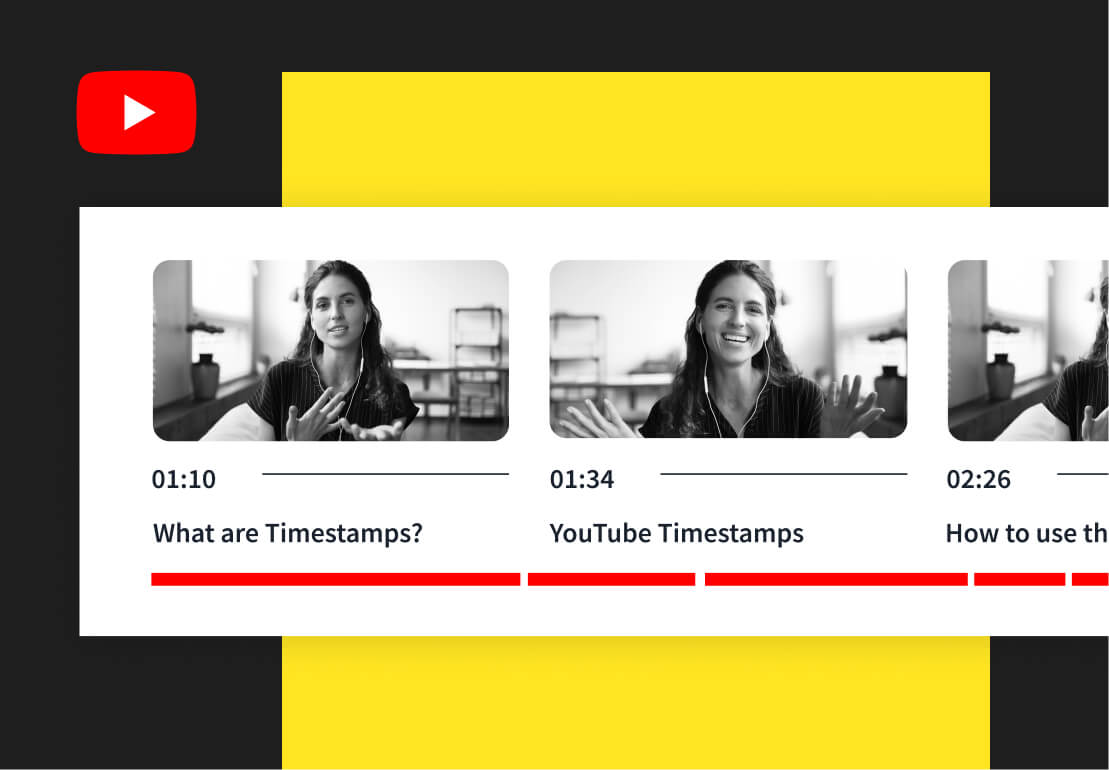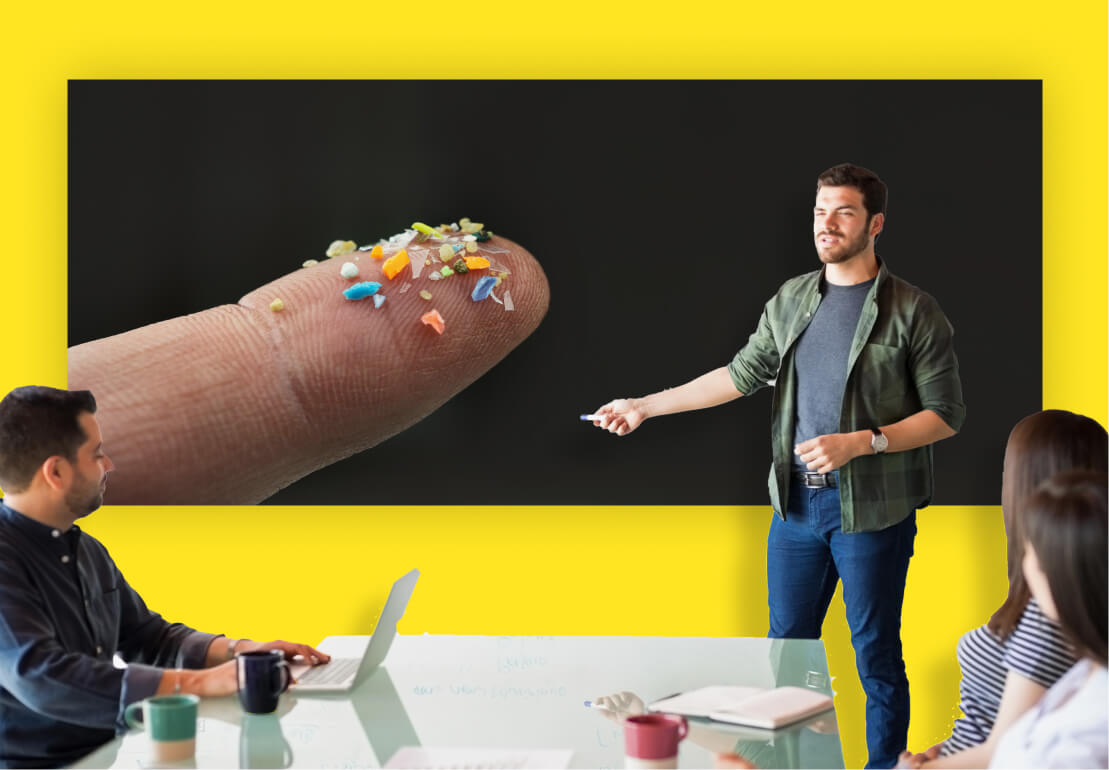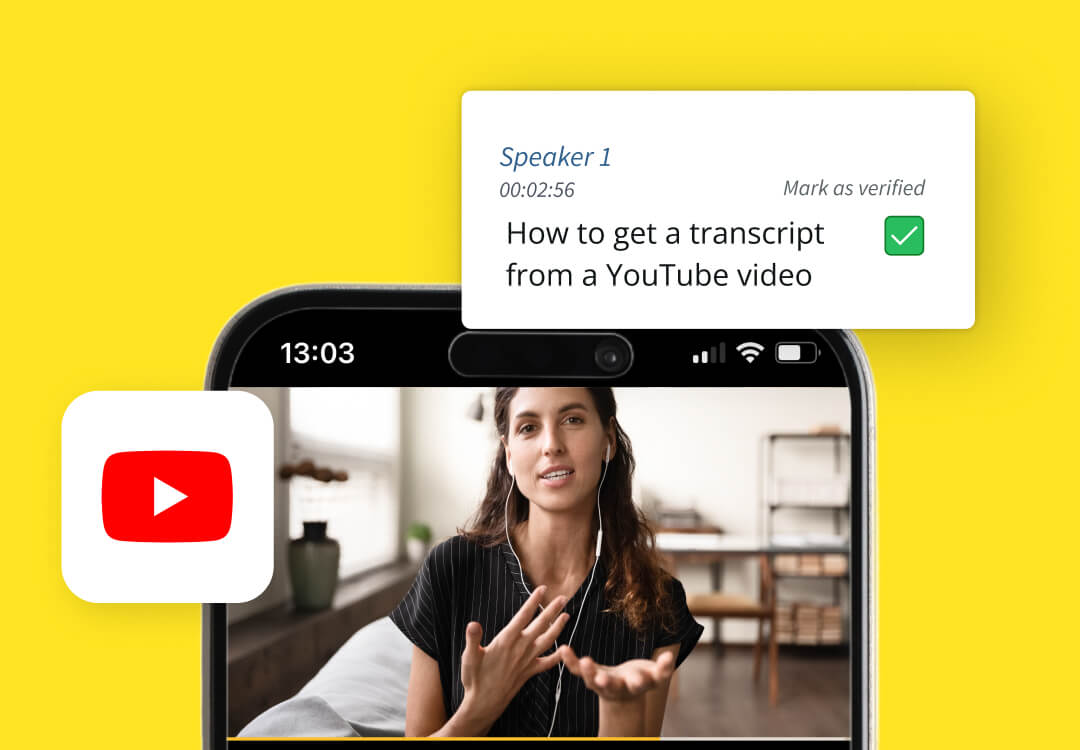
In today's digital-first world, journalism is about more than chasing stories — it's about being seen. Fortunately, this isn’t all down to luck. SEO (Search Engine Optimization) is the secret to keeping your articles visible and relevant. The right SEO-friendly headline, meta data and on-page optimization are what draw readers in: your reporting is what makes them stay.
In this guide, we’ll explore the fundamentals of SEO for journalists. We’ll cover how to craft SEO-friendly headlines, structure your writing and tweak the little details (that many journalists overlook) to get your work front and center.
Why is SEO important for journalists?
SEO is defined by the experts at Moz as “a set of practices designed to improve the appearance, positioning and usefulness of multiple types of content in organic search results.” To put it simply, it's optimizing your content to climb to the top of search engines like Google.
All web content should be optimized to attract the highest possible visitor numbers. With around 8.5 billion searches happening every day on Google alone and new news sources popping up daily, SEO for journalists has to be a priority when publishing online. As well as making individual articles more visible, SEO helps establish you (and your outlet) as an authoritative source over time.
SEO for journalists: The basics
So, you want to get more eyes on your work — but where do you start? Here, we’ll take you through the basics of SEO for journalism.
Writing SEO-friendly headlines
Every journalist understands the importance of an attention-grabbing headline. Publishing online is no different and it can help make sure you're sending the right signals to search engine. But what is an SEO-friendly headline? Well, the key is in the keywords.
Keywords
A killer headline isn’t just click-worthy: it’s keyword-friendly. A keyword is simply a commonly searched word or phrase that is relevant to your story. Targeting relevant keywords in your headlines will help search engines understand the topic you are writing about and improve the visibility of your article in search results.
There are two main types of keywords to use in SEO for journalism:
- Short-tail keywords: These are general keywords, consisting of one or two words. They tend to have high search volumes. For example, the term “link building” gets 6,300 searches per month on Google in the US, according to Ahrefs data.
- Long-tail keywords: These are longer keywords (typically consisting of three to five words) and are more specific. Long-tail keywords have lower search volumes but they are usually easier to rank for than short-tail keywords and attract more targeted traffic. For example, the term “link building in SEO” gets 300 searches per month on Google in the US, according to Ahrefs data.
Use keywords as naturally as possible in your headline and avoid cramming them in where they don’t fit. Search engines are sophisticated enough to recognize “keyword stuffing” (spamming a page with keywords to manipulate rankings) and can penalize your website for this.
Clickbait
Leaving the reader wanting more is important, but avoid falling into the classic click-bait trap. While once a staple of the online world, readers and search engines have quickly caught on to click-bait tactics and these types of articles have lost their power over time. Instead, be clear and specific in your headline. A cryptic headline may be intriguing, but it isn’t SEO friendly and it won’t encourage readers to click either. Scroll down to see an example of a non-clickbait headline — and one to avoid.
Length
When it comes to an SEO-friendly headline, less is more. It's best to keep headlines under 60 characters long if possible. Long, rambling headlines will get cut off in search results. Plus, a long-winded headline can lose its punch with the reader.
Example headline
Let's put it into practice and look at a good and bad SEO headline example.
Good SEO headline: "Electric Vehicle Sales Driven To Record High in 2024"
This is a good headline as it fits in the keyword “electric vehicle sales”, which gets 1,600 searches per month in the US, according to Ahrefs data. The headline is also clear, specific, under 60 characters and even includes a fun road-related pun!
Bad SEO headline: "More People Are Buying EVs Than Ever Before"
This headline doesn’t target any relevant keywords like the example above, meaning it is not well-optimized. It also doesn’t have a timeframe like the example above and lacks impact.

Bylines
Your byline is more than just a credit line: it’s an opportunity to boost SEO and attract a wider audience. The key when it comes to bylines is consistency. If you choose to go by your full name (which is always recommended), do this in every article you publish. You should also include a hyperlink in your name to an author bio or portfolio page if possible — and a headshot if you don’t mind dropping the air of mystery.
Including a hyperlink to your author bio or portfolio in every piece gives readers an opportunity to explore your work and establishes you as a credible, go-to source. It also boosts your authority with search engines, helping Google recognize your reporting and giving your site's SEO a lift as well.
Not exactly sure what a byline is, or other journalistic terms for that matter? Check out our glossary of newsroom jargon for everything you need to know.
Meta descriptions
While they can be overlooked in the world of journalism, meta descriptions are vital for SEO performance. When optimized well, they significantly boost your chances of getting good rankings.
The meta description should act as a summary of your piece without giving too much away. It should be no more than 155 characters and should also include at least one of your targeted keywords, as well as a hook for reeling readers in.
Here's a quick example of an SEO-friendly meta description:
“Electric vehicle sales reached a record high in 2024. But what exactly is driving this surge and what’s fueling the growing demand for EVs this year?”
You can see we are again targeting the keyword “electric vehicle sales” right at the start of the description. We’re also providing the reader with a rundown of what will be covered in the article while posing questions to lure them in.
The writing
When it comes to the actual article itself, the quality of writing is always the most important factor. But by using SEO for journalists, you can improve your visibility and attract a wider share of readers.
Keywords
Keywords are crucial for SEO headlines and meta descriptions and this goes for your writing, too. Find ways to fit your keywords in naturally so that the article still reads well.
We get it: your primary goal is to write the best article possible, not include a lot of SEO keywords. But, if you're serious about getting your work out there, it is possible to target a few keywords here and there without compromising your standards. It just takes a little creativity.
There is no set amount of keywords to include per article, but as a rule of thumb, you should try to incorporate one primary keyword and a handful of secondary keywords (Ahrefs). You should also aim to use your primary keyword at least once within the first 100 words to demonstrate to search engines what your piece is about.
Secondary keywords support the primary keyword and can help you expand the piece further. For example, if writing a piece about the best electric cars on the market, your primary keyword can be “best electric cars” (31,000 searches per month on Google US according to Ahrefs) and secondary keywords could be:
- “best electric cars 2024” (13,000 searches)
- “best used electric cars” (2,800 searches)
- “best luxury electric cars” (1,500 searches)
Links
Aside from keywords, other important factors of SEO journalism include using good-quality links. This goes for both internal links, which can link to other relevant articles on your website, and external links, which link to other sources.
Every good journalist knows the importance of backing up claims and getting information from reliable sources for credibility. With external links, you can demonstrate this credibility to your readers by showing you get your information from authoritative and reliable sources.
Internal linking is crucial, not only to show readers other relevant pieces that may interest them but to give search engines a better understanding of both the structure of your website and the topics you cover.
E-E-A-T
Want readers to eat up your content? You’ve got to use E-E-A-T. A key aspect of Google’s Search Quality Rater Guidelines (SQRG), the acronym stands for:
- Experience: Does the writer have first-hand real-world experience of the topic? For example, if you are a sports journalist this might refer to whether you actually watched the game that you are reporting.
- Expertise: Does the writer have advanced knowledge or skills of the topic? This is especially important for technical and healthcare fields.
- Authoritativeness: Is the article from a credible source? Factors that can boost your authority include getting backlinks from other reputable sources.
- Trustworthiness: Is the article reliable, accurate and truthful? This is considered the cornerstone of the E-E-A-T principle.
Although E-E-A-T is not a direct ranking factor, is important for SEO. Writing articles that showcase trustworthiness, reliability and expertise signals to Google that you’re a credible source, boosting your visibility. So, always keep E-E-A-T in mind while writing and editing your work.
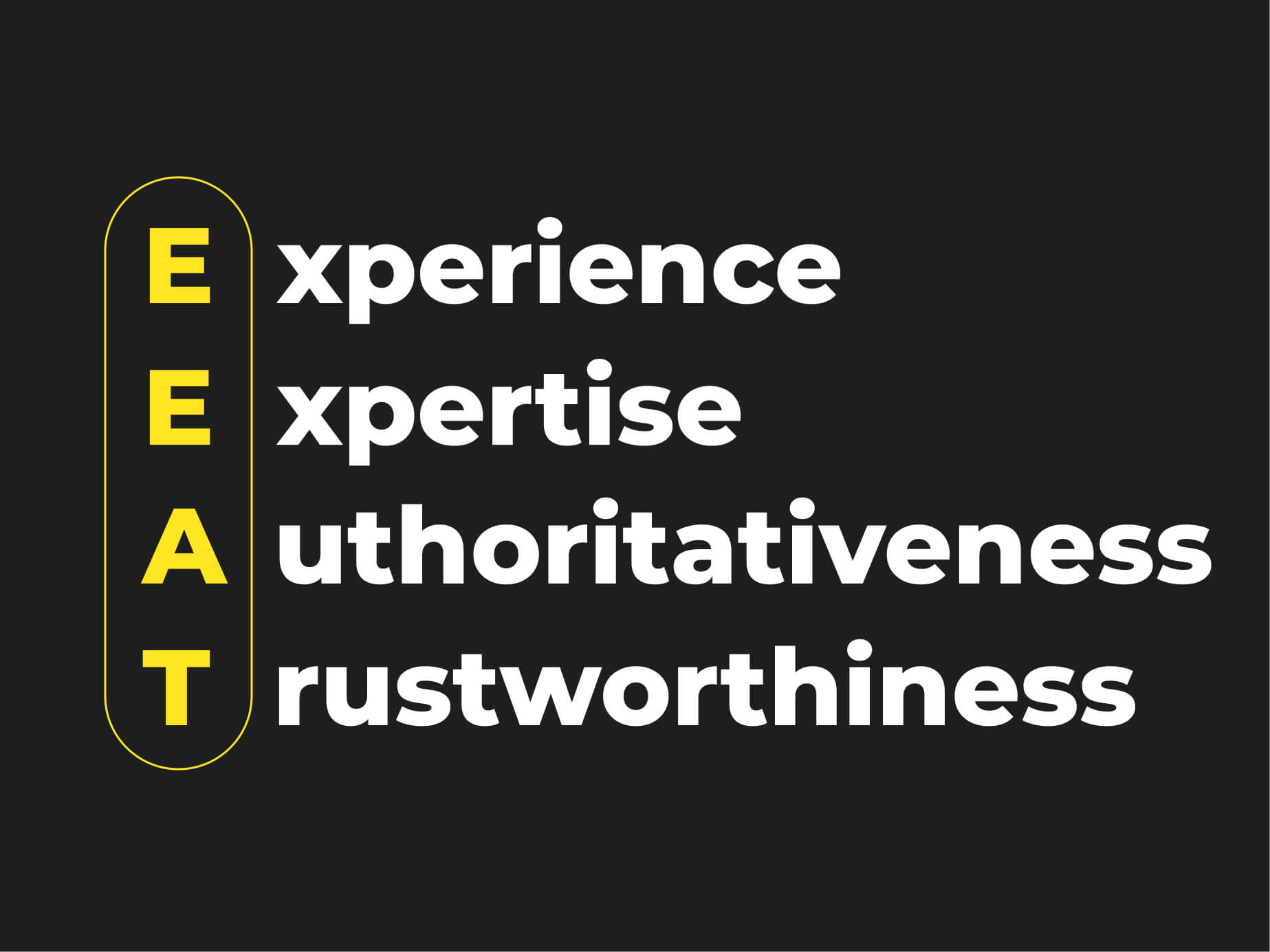
Quality
Above all else, don’t sacrifice the quality of your writing and reporting for SEO. Don’t feel like you need to extend your word count to cram in as many keywords as possible, as padding an article with unnecessary fluff won’t help you rank.
Establishing reliability and credibility with search engines can help you rank better and gain the reader's trust. So, focus on creating accurate, trustworthy articles. With Trint’s AI transcription software, you can transcribe video, audio and speech to text with up to 99% accuracy in just a few moments. This allows you to create reliable and relevant articles based on direct quotes, interviews and other primary sources, without the need for tedious manual transcription.
Images
You may think it’s all about the writing. And while that's pretty important, there are also ways to optimize any imagery you include in your articles, too.
Search engines can't contextualise imagery like a person can, so its important to add descriptive title and alt text. Something as simple as changing the file name from a generic name like “IMG_XYZ” to something more relevant to your article can improve SEO (RankMath). You should also compress images so they don’t take too long to load, as slow-loading pages will increase your bounce rate.
Of course, making content accessible is a vital consideration for any journalist. If you use images, always write concise image descriptions and alt text to ensure the article is accessible. This also offers another natural, unobtrusive way to target your primary keyword again.
The website
Optimizing your articles is vital for SEO journalism, but there are also improvements you can make to your website to boost visibility.
Website structure
Your site has to be easy to navigate if you want it to perform well with search engines. Put simply: search engines work for the people. They honor content that is easily found, navigated and digested. If your site is just a bunch of pages that don't have a clear user journey, your pieces probably aren't going to show up in search engines.
Guiding customers to the information they're looking for should be the primary goal of your website structure. Categorizing your posts into themed areas and making these categories easily reachable from your homepage is essential and is a great place to start.
Remember the Three Click Rule: your posts should be no more than three clicks away from your home page. Otherwise, visitors could get bored and jump ship. Keep it simple and clear and the search engines will reward you.
Mobile-friendly pages
Making sure your site is easily accessible on mobile should be central to any basic SEO strategy. According to Statista, in January 2024 almost 60% of all website traffic happened on mobile devices; that's a huge audience to potentially miss out on.
Optimizing your site for mobile use is a great step forward for SEO. You can do this by making sure your site design can adapt to all screen sizes. If this is not an option for your website you can instead use AMP (Accelerated Mobile Pages).
AMP is an HTML framework you can use to make your pages load quickly on mobile devices. It results in a more stripped-back-looking page. They are less common now as technology has advanced, but can be a useful resource if loading times are something your website struggles with. Just bear in mind that an AMP page only allows one advertisement tag per page (Semrush).

Technical SEO
It isn’t just keywords and good content that make up SEO: there is a technical side to optimization. This encompasses all the technical aspects of your website which can have an impact on your rankings, such as page load speed, URL structures and other aspects already mentioned, like mobile-friendly pages. It is best to delegate these tasks to a technical SEO expert for the best results.
Don’t let your great work go unnoticed. With a good SEO headline and the principles of E-E-A-T, you’ll not only tell great stories — you’ll make sure the world reads them.
With Trint, you can elevate your work even further. Our Story Builder helps you turn raw footage or interviews into polished articles in no time, while the Trint Mobile App lets you transcribe on the go. Book a demo to get started today.
Looking for more tips and advice on all things SEO and journalism? Check out our creator hub for informative guides, including our guides to the five best writing tools for journalists and podcast SEO.
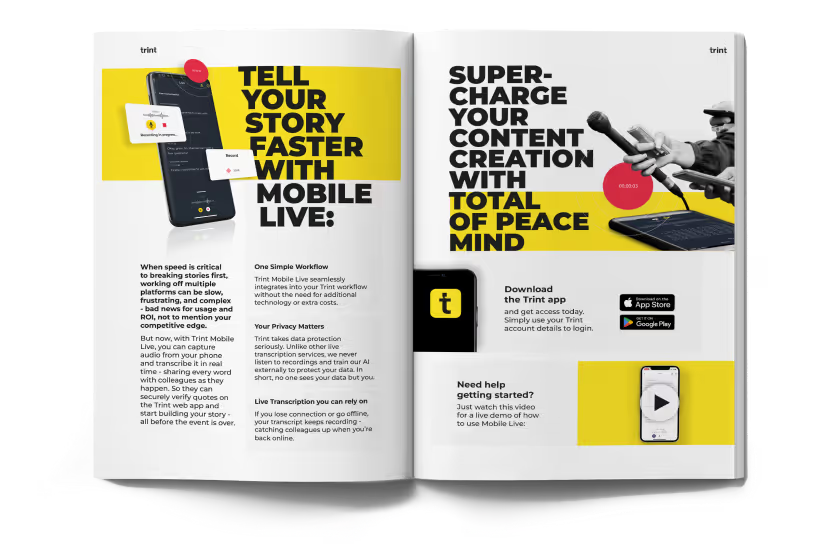
DON'T take our word for it
Download our eBook, Telling Stories Faster With Trint, and hear how Trint is making content creation faster, easier and, most importantly, painless for newsrooms across the world.
Download
